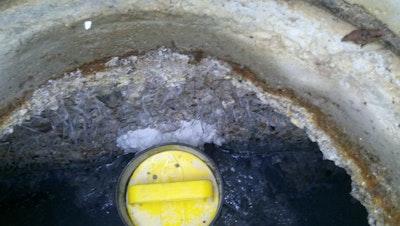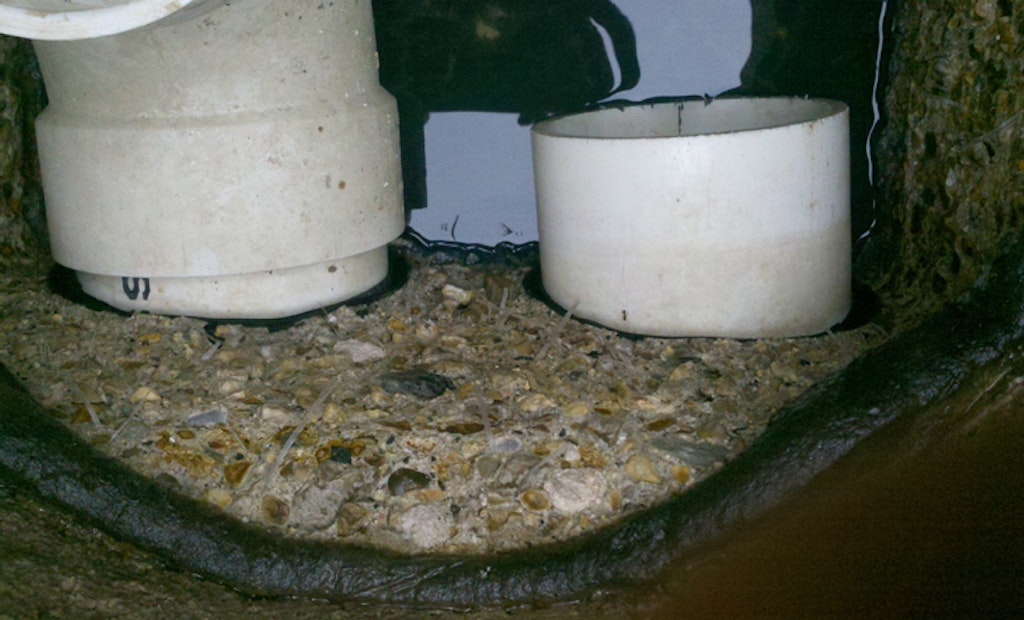Interested in Onsite Systems?
Get Onsite Systems articles, news and videos right in your inbox! Sign up now.
Onsite Systems + Get AlertsDiscussions on excessive corrosion around outlet baffles on concrete septic tanks prompted a conversation with a reader about his experience.
The reader from Ohio indicated that not only did he see excessive corrosion around the outlet baffle, but also in the distribution box. The system included an effluent screen at the outlet.
I have received a number of reports from around the country (up until now mostly from Colorado, New Mexico and Arizona) about distribution box deterioration along with deterioration at the outlet end of septic tanks.
For the distribution box situation it seems that effluent screens may be inhibiting the ability to vent back through the tank, so establishing a vent for the box might help. The other strong possibility with concrete distribution or drop boxes is that the quality of the concrete pour does not meet the requirements for sulfur resistance.
The National Precast Concrete Association has recommended standards for a tank pour and if those are not followed the boxes and the tank are subject to corrosion.
There are two ways tanks or distribution boxes can be subject to corrosion. In areas where soils and subsequently the groundwater are naturally high in sulfates, corrosion can occur on the outside if proper precautions are not taken and from the inside due to the elevated sulfate concentrations in the water.
Experienced service providers have expressed various other theories and ideas for causes of corrosion:
- Poor concrete mix at the plant
- Tank construction
- Incorrect mix and additives in the concrete
- Water softeners discharging to the tank
- Poor quality well water
If none of these seem like the cause of a corrosion problem you see, do some more research on the extent of corrosion and kinds of problems in your area.
Research whether the tank is in an area where the soil and water are high in sulfates. If that’s the case, then you need to ensure the products in question meet sulfur resistance standards. Conduct well water tests to determine sulfate levels and consult local soil scientists about soil conditions.
Depending on the results of these investigations, tanks and distribution boxes may need to be replaced with polyethylene or other resistant products. The homeowner can also look at water treatment devices as a part of the solution. Unfortunately, the cause is probably due to a combination of factors and so may require numerous changes to avoid future problems.
About the Author

Jim Anderson is connected with the University of Minnesota onsite wastewater treatment education program, is an emeritus professor in the university’s Department of Soil Water and Climate, and education coordinator for the National Association of Wastewater Technicians.
Send him questions about septic system maintenance and operation by email to kim.peterson@colepublishing.com.







